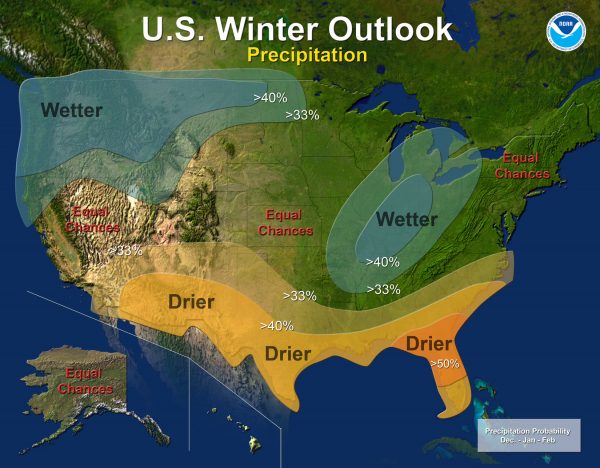
A diver in California’s kelp forest. A new study will explore possible radioactive contamination from the 2011 Fukushima meltdowns (Wikimedia Commons/Ed Bierman).
Biology professor Steven L. Manley of California State University, Long Beach, and the Lawrence Berkeley National Laboratory’s Head of Applied Nuclear Physics Kai Vetter have set up monitoring off the state’s coast throughout 2014 to determine the extent of radioactive contamination of the extensive nearshore kelp forest.
Japan’s Fukushima nuclear power plant meltdowns in March 11, 2011, following the destructive Tohuku earthquake and tsunami, caused the concern. The scientists have particular interest in the presence of two long-lived radioisotopes of cesium released by the accident.
Dr. Manley explains the study rationale:
“The California kelp forest is a highly productive and complex ecosystem and a valuable state resource. It is imperative that we monitor this coastal forest for any radioactive contaminants that will be arriving this year in the ocean currents from Fukushima disaster…. Anticipated concentrations that will arrive are most likely very low, but we have no data regarding its impact on our coastal ecosystem. Kelp Watch 2014 will provide an initial monitoring system at least in the short-term.”
Dr. Vetter has extensive experience in measuring radioactivity in seaweeds and other biological samples. He came from the J. W. Goethe-University in Frankfurt to UC Berkeley in 1995 to research and teach and has headed the applied nuclear physics program at LBNL since 2011.
Sampling will begin next month, with 19 academic and government institutions and three other organizations/businesses participating, according to Jon Weiner at the Berkeley lab’s news center. Marine scientists and educators from over 30 sites up and down the West Coast will collect a large amount of Giant Kelp and Bull Kelp samples periodically throughout 2014. Because kelp absorbs and concentrates chemicals and inorganic ions in seawater, it’s ideal for such a study. Kelp forests are home to sharks, rock fish, crabs, urchins, and anemones, so the research should yield observations important to the entire coastal ecosystem.
Several institutions in the region—Moss Landing Marine Laboratory (California State University), Marine Science Institute (UC Santa Barbara), Coastal and Marine Institute (San Diego State University) and CSULB—provide processing where needed. The Lawrence Berkeley National Lab’s Low Background Facility will perform radionuclide analysis.
The collaboration is unique in several ways:
There is currently no other organized scientific observation of the Fukushima accident’s impact on our coastal ecosystem, the researchers say. Kelp Watch 2014 has created the first rigorous monitoring.
The work has been started independently and currently lacks grants. “At the present time this entire initiative is unfunded by any state or federal agency, with time and costs being ‘donated’ by the participants,” Manley said. “Still, more participants are signing up weekly…. We encourage scientists, educational institutions, and other interested organizations to participate in the collecting and/or processing.”
As data becomes available, the participants in the voluntary study will post it for public access.
“If the kelp takes up the radioactive material, we should detect it,” Dr. Manley says.
Anyone interested in taking part in the project can contact Manley at [email protected]. Put “Kelp Watch 2014” in the subject line.

Mayor of Town That Hosted Fukushima Nuclear Plant Says He Was Told: “No Accident Could Ever Happen”
JANUARY 17, 2014 Democracy Now!
There are 59 children with thyroid cancer and there are hundreds more on the way. Fukushima is NOT livable, and Japanese Government says so. The radiation level is still very high.
Japanese Government ignores all the problems we’re having. There are many young people between 15 and 19 in Fukushima who are in high school who have died suddenly. But Japanese Government NEVER recognized it — Japanese Government will NEVER recognize it as being caused by the radiation.
Another huge issue is those who are forced to live within Fukushima do NOT have access to full health measurement. They’re also told that any diseases that they have is NOT caused by the radiation. The Fukushima disaster is a disaster on international level — so Japanese Government needs to really recognize this.
Excellent stuff! Thanks for sharing!